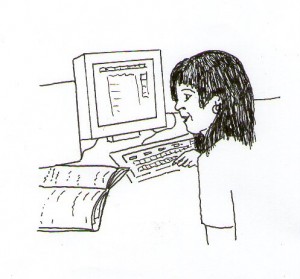eHealth Records in Australia – Some New(ish) Developments
The Healthcare Identifiers Act (2010) allows for an unspecified national registration agency to assign unique healthcare identifiers to patients, thus enabling the consistent storage and retrieval of information collected by multiple healthcare practitioners and facilities. This is an exciting development in eHealth in Australia. The Personally Controlled Electronic Records Act (2012) adds to this, with the stated objective, “to enable the establishment and operation of a voluntary national system for the provision of access to health information…” (Part 1, Paragraph 3a). While Mukesh (2011) alludes to legislation being endorsed as early as 2004, these two acts of the past five years represent a concrete commitment to eHealth record keeping, which began with a trial of a system that was then known as Personally Controlled Electronic Health Record (PCEHR), but which is now rebranded as MyHealth.

The website ehealth.gov.au now offers an online sign up for the MyHealth services which is linked to the MyGov portal. The site lets users sign up for MyHealth using their Medicare card and a few other details and, once signed up, access their record using a common set of login details that they can also use for other government services such as taxation and welfare. A mobile app is also available.
This year the Federal Government announced that it would make MyHealth and opt-out, rather than an ‘opt-in’ service (ANMJ, 2015). The site’s disclaimer indicates that a patient may choose to have specific information left off their eHealth record by indicating this to a health practitioner, or may choose to have specific parts of their health record deleted at any time, indicating that information is being gathered by participating health practitioners regardless of whether a patient signs up for access.
The opt in model undoubtedly means that healthcare practitioners could soon be working in an increasingly data rich environment. Murkesh (2011), Partel (2015) and others have argued that quality and safety can be improved through implementation of electronic health records. Murkesh points out that according to AIHW (2002) figures, prior to the implementation of any form of eHealth record in Australia, 18% of medical errors reportedly resulted from inadequate availability of patient information and that many healthcare encounters are between a patient and practitioner who have never seen one another before. He, and others, argue that errors can be reduced and quality and efficiency can be improved if practitioners are able to access a patient’s records electronically.
Frontline carers may be asked by patients about MyHealth. Whilst some patients may simply ask how it works and how they can sign up for online access, others may also have queries regarding what control they have over their information and how securely it is being held. Those wishes to develop a working Knowledge of MyHealth may begin by reading the FAQ section on the website.
Author: Mr David N. Webb
References:
Mukesh, H 2011 ‘Landmark moment in eHealth for Australia’, in Dialogue (Academy of the Social Sciences in Australia), Vol. 30, No. 2, pp. 31-35
‘Opt-in trial for national eHealth system’ 2015, Australian Nursing & Midwifery Journal, Vol. 22, No. 11, p. 8.slot gacorslot gacorslot online
